Drinking tea should be a simple and comfortable experience, where finding a tea that suits your taste is all that matters. However, the constant influx of new products or terminology in the market often leaves ordinary tea enthusiasts confused.
For example, the once-popular Small Green Citrus in 2016, along with Tangerine Pu'er, Citrus Pu'er, and Chenpi Pu'er. These names for reprocessed Pu'er teas, which are similar yet distinct—have you truly figured them out?
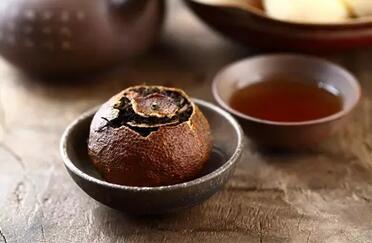
1. Chenpi (Dried Tangerine Peel) and Chenpi Pu'er Tea
Chenpi, also known as dried tangerine peel, is made from the dried peel of the citrus fruit from the Rutaceae family, specifically the orange and its cultivated varieties. In traditional medicine, the older the peel, the better its quality, hence the names "Chenpi" or "Gui Lao."
Chenpi varies by origin, with Sichuan Chenpi and Guang Chenpi being notable. Among Guang Chenpi, the Xinhui origin is considered the most authentic, especially the Xinhui Chenpi, which is highly prized. The peels of the large red citrus grown here, when dried into Chenpi, hold significant medicinal value and are also prized as traditional spices and condiments, renowned worldwide.
According to Guangdong provincial standards, "The peel of the tea branch citrus (large and small oil-body varieties) cultivated within the protected geographical area of Xinhui Chenpi, after being sun-dried or baked and stored for over three years within the protected area, is called Xinhui Chenpi."
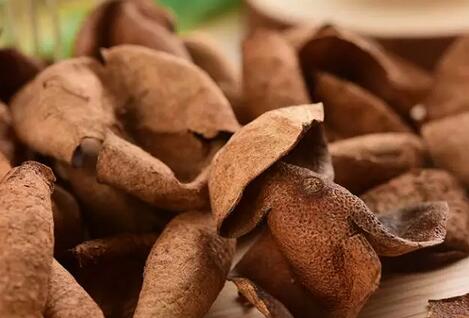
Broadly speaking, Chenpi tea refers to a blend of Chenpi and tea leaves. Thus, Chenpi Pu'er is simply a mix of ripe Pu'er and Chenpi.
Currently, Chenpi Pu'er comes in several forms: one is Chenpi cut into pieces and mixed with loose ripe Pu'er; another is the two pressed together into tea cakes or bricks. In Guangdong folk tradition, Chenpi and tea leaves are usually stored separately and combined in specific proportions when brewing. Aged Pu'er paired with Chenpi is considered a perfect match.
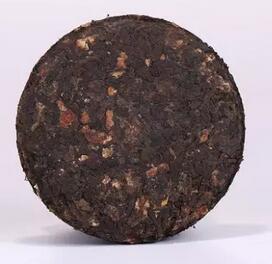
Chenpi Pu'er combines the unique fruity aroma of Chenpi with the mellow sweetness of Yunnan Pu'er, resulting in a smooth, sweet, and lingering tea soup. It is also popular for its beneficial health effects.
2. Citrus and Citrus Pu'er Tea
Citrus, also known as tangerine or golden fruit, belongs to the Rutaceae family. Citrus is similar to oranges but generally larger, with thicker skin.
Currently, the commonly recognized Citrus Pu'er tea uses Xinhui citrus (also known as tea branch citrus) as its raw material, the same as the Guang Chenpi mentioned earlier. This variety, known as Xinhui Guang Chen citrus or Chenpi citrus, holds a national geographical indication.
After harvesting, Xinhui citrus is washed and dried. A hole is made at the top of the fruit, the pulp is removed, and Pu'er tea is stuffed inside. The cut peel is then reattached, and the fruit is dried to produce Citrus Pu'er tea.
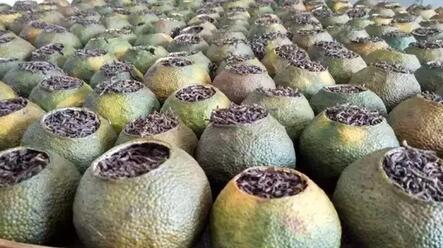
Apart from Xinhui, other notable citrus varieties include Zhaoqing's Emperor Citrus, Chaozhou Citrus from the Chaoshan region, as well as Guangxi Citrus and Zhuhai Citrus from surrounding areas. These are also made into Chenpi and Citrus Pu'er tea sold nationwide, but due to differences in geography and soil quality, their overall quality is inferior to Xinhui's.
3. Tangerine and Tangerine Pu'er Tea
In botanical classification, tangerines and citrus are of the same family and genus but different species. Citrus fruits are larger, spherical, and slightly flat, with thick, spongy skin that stores well. Tangerines, also called mandarins, are smaller, often flat-round, with thin skin and a thin spongy layer. When dried, they lack medicinal value and do not develop the aged aroma when brewed.
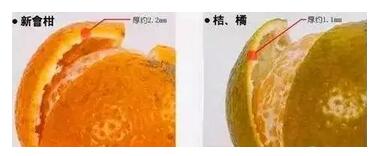
Tangerine Pu'er tea on the market is typically made from Yangshan tangerines or other tangerine peels combined with Yunnan ripe Pu'er tea.
4. Citrus Pu'er Tea ≠ Chenpi Pu'er Tea
Although the raw material for Citrus Pu'er tea is the same as Guang Chenpi, the peel must be aged to become Chenpi. Therefore, strictly speaking, Citrus Pu'er tea without aging restrictions is not the same as Chenpi Pu'er tea.
Many products marketed as Chenpi Pu'er tea are actually Citrus Pu'er tea because Chenpi Pu'er tea involves higher costs and significant medicinal value, making genuine Chenpi Pu'er more expensive. Citrus Pu'er tea, being younger, lacks the same efficacy and is thus cheaper.
Currently, there is no national standard for Chenpi Pu'er tea. Some argue that newly made Citrus Pu'er tea must be aged for three years before it can be called Chenpi Pu'er tea.
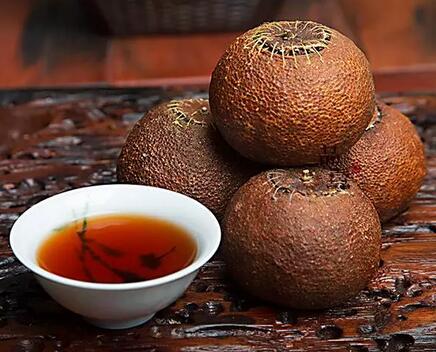
5. Tangerine Pu'er Tea ≠ Citrus Pu'er Tea
The difference between Tangerine Pu'er and Citrus Pu'er is first reflected in price. Authentic Xinhui citrus costs 4-6 times more than Yangshan tangerines or other tangerines, making Citrus Pu'er significantly more expensive.
Due to different raw materials, their appearance, aroma, and taste also differ. To identify authentic Citrus Pu'er tea, observe the oil glands on the peel: Citrus peels have larger, evenly distributed oil glands with curled edges, while tangerine peels have smaller, densely packed glands. Thickness also varies: Xinhui citrus peel is thicker (~2.2mm), whereas tangerine peel is thinner (~1.1mm). Citrus Pu'er tea tastes sweet with a lingering aftertaste, while Tangerine Pu'er lacks a pronounced aged aroma.
6. Small Green Citrus May Not Suit Everyone
The Small Green Citrus, which gained immense popularity in 2016, is made from the young peel of Xinhui citrus.
Citrus peels are categorized by harvest time and quality: young peel (green peel), semi-red peel (yellow peel), and fully red peel (red peel). Young peel refers to the peel harvested when the fruit is uncolored and physiologically immature (typically between the Start of Autumn and Cold Dew in the lunar calendar). The fruit at this stage is called Small Green Citrus, with a greenish-brown to blackish-green exterior, hard and thin skin, and a bitter, aromatic taste. Young peels are rich in volatile oils, making them more resistant to brewing.
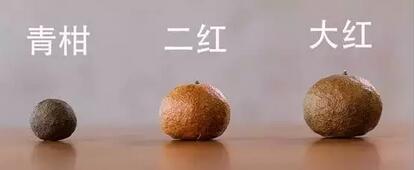
Compared to mature red peel, young peel has a more intense medicinal nature, with strong qi-regulating properties. In traditional Chinese medicine, it is often used to break qi, soothe the liver, and resolve stagnation—unlike the milder red peel, which is used for regulating qi and strengthening the spleen.
As the chilly autumn and winter seasons approach, ripe Pu'er tea's mellow sweetness is particularly appealing. Many tea enthusiasts likely see friends sharing images of Small Green Citrus brews on social media.
However, tea drinking should be tailored to individual needs. The wildly popular Small Green Citrus may not suit everyone. Tea lovers should choose rationally based on their health conditions, as the most important thing is to find a tea that feels comfortable to drink.